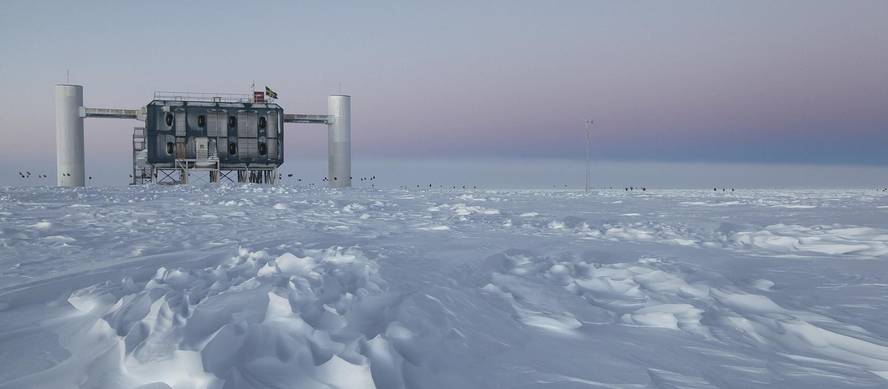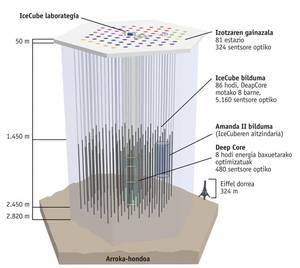28 extrasolar neutrinos detected in Antarctica
The journal Science, held on 22 November, released a contribution to history: they have detected 28 neutrinos outside the solar system in Antarctica. Neutrinos are everywhere (billions cross us every second), but they are electrically neutral and hardly interact with the rest of the matter, so their detection has been a great technological challenge. The only signal outside the solar system was received in 1987 and since then nothing.
Between May 2010 and 2012 researchers have detected 28 neutrinos in the signals collected at the IceCube research center: These are intermediate neutrinos of energy between 30 and 1000 TeV, that is, outside the Solar System, since the cosmic rays produced by the atmosphere have less energy.
The news has been considered "the starting point of astronomy by neutrino" in the journal Science by the researcher of the University of Hawaii, John Manoa, who in 1973 proposed the construction of a similar detector in the ocean. In fact, the lack of interaction with the rest of the matter means that they are not diverted from birth to the detector. Astronomers, for example, want to know where high-energy cosmic rays occur, following neutrinos backwards.
The IceCube observatory is made up of 276 people from 12 countries and 41 organizations. Detector, for its part, more than 5,000 light sensors incorporated in the ice up to 1,450 and 2,450 meters deep: 86 vertical tubes covering 1,000 square meters in total. The observatory began work in 2010 and has already been proposed to expand sensor coverage.








